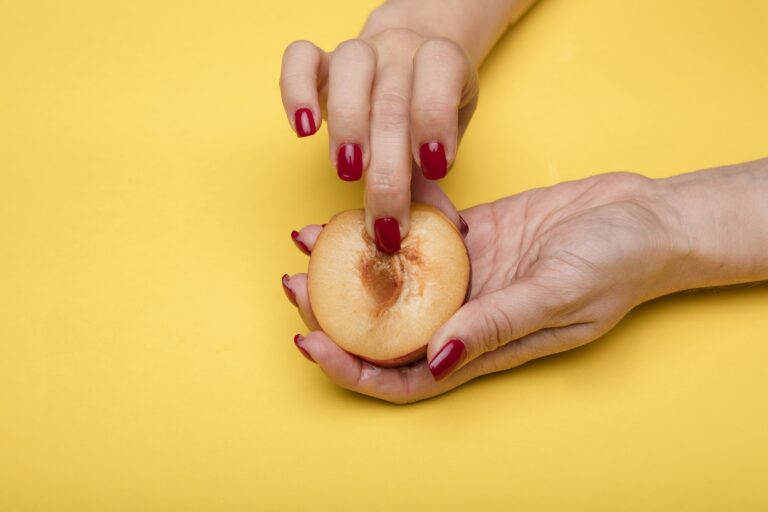Every body is different, so your vagina might look slightly different. But most healthy vaginas have a corrugated surface with ridges or bumps, which feel like rubbing your tongue against the roof of your mouth.
Your vagina may be dry or wet, especially during the time of the menstrual cycle around ovulation. It might also have a little bit of discharge, which might change color or thickness.
Feeling the Walls
It is important to note that your vagina doesn’t feel exactly like the outside of your genitals. It’s a little different, but it’s still an area that feels very good and natural. It feels warm and soft, and the muscles that form it are powerful enough to grip your partner during sex or masturbation (a great thing).
The lining of your vagina is called mucosa and it’s very similar to the lining inside of your mouth. You can easily run your finger along this lining to see what it feels like.
When you gently put your fingers in your vagina, they should be able to stretch out and hug them. The hymen is very delicate, so don’t push in too hard or it may hurt. It’s best to wait until you’re more aroused and you can get your hands down there a little more easily.
Many people report that the feeling in their vagina is a lot like rubbing your clit. It’s very sensitive and a little slippery. And, of course, it can be very tight and firm or it can be a bit looser.
One of the biggest reasons why women’s vaginas feel less and less sensitive over time is because they lose oestrogen and this causes the muscles in the vagina to weaken. There are lots of ways you can improve the sensation in your vagina, including using a lubricant. You can also do simple exercises that will help to strengthen your pelvic floor muscles.
Feeling the Cervix
If you have a healthy vagina, the walls of your insides feel soft and spongy. Deeper into the vagina, near your back wall, you’ll feel a harder spot known as the cervix. It feels a little like a button or a dimple in the middle, and is shaped sort of like a donut with an opening on either end. This is the part that connects your vagina to your uterus, and it’s important to know how your cervix looks and feels so you can protect your health.
Everybody’s cervix is a little different, and it may have more or less of a donut shape, and the center part can be a bit harder or softer than the rest. But your cervix is usually a bit firmer than the walls of your vagina and it should have a smooth texture with a slight indentation in the middle (known as the external os).
Try doing a self-exam by leaning on a pillow or standing against the wall, keeping both feet flat on the ground and your legs wide apart. With one hand, spread the wall of your vagina and feel around for any bumps or raised areas that could be sores or unusual growths. With your other hand, gently insert a finger into the vagina and feel for the cervix. It’s likely to be more comfortable if you lubricate your finger with a water-based lubricant first.
Feeling the Floor
The bottom of your vagina is a bit like your clit. It can be quite sensitive and feel amazing to stroke while you’re cocking. It can also be a bit of a tease because of how powerful the muscles in there are. It’s also a bit of a mystery as it doesn’t always feel like that when you have sex.
To do a self-exam, remove all your clothes and get comfortable. Stand in front of a mirror or sit on a chair and separate your legs. Then gently spread your labia apart and aim the light and a mirror at them to see inside. You should be able to feel the outer and inner vaginal walls, which should be pinkish in color.
If you can feel your cervix, it should be a little harder than the walls and have a similar sensation to the tip of your nose. The cervix leads down to the anus, which is another area that can be sensitive and feel different depending on how you’re feeling and what time of the month it is.
Aside from the feeling of your own clit, the outside of the vulva can feel a bit like sandpaper, especially when it’s dry. Using a personal lubricant can help add moisture and make things feel silky smooth. But avoid douching, which can strip your vagina of its natural pH balance and leave it susceptible to infections and harmful bacteria.
Feeling the Bottom
When it comes to the vagina, every body is different, but a typical woman’s vulva feels like an elastic canal with a lining similar to the roof of her mouth. A woman’s vulva also has bumps and ridges, which are called rugae and make it less likely to tear during menstruation or during sexual intercourse or childbirth.
Most women’s vulvas have a lot of lubrication because the lining is rich in water and contains sweat glands. It also helps fight off bacteria and may have a prickly or sticky feel to it. This is normal, and no reason to worry. It can help to use a personal lubricant as well, especially during sexual intercourse.
A fem’s vulva will have an even softer texture when she is ovulating and has a lot of cream down there. It will also be a bit more sexy, which is why so many guys love sliding their hard penis into her wet love cave during orgasm.
As you can see, there is a lot to learn about your vulva and how it feels. It is an amazing part of your body, one that deserves to be embraced. And if you want to orgasm more often, there is no better way than by getting to know it. For more information about orgasms and how to get them regularly, check out The Easy Orgasm Solution.
See Also:






